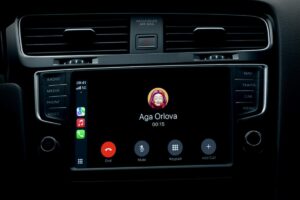Published on August 7, 2025 – Key Highlights: With a crucial meeting on the horizon between U.S. President Trump and South Korean President Lee Jae-Myung, the strength of their alliance is at a critical juncture. The looming threat stems from North Korea’s ability to launch nuclear-tipped ICBMs that can reach not only South Korea but also directly strike the U.S. mainland.
– This new reality raises grave concerns; the idea that defending South Korea could inadvertently lead to a nuclear attack on a U.S. city—potentially enhanced by support from Russia—can’t be dismissed.
– President Trump’s approach to international matters, which is often based on transactional deals, raises uncertainty regarding the reliability of America’s commitment to South Korean security, which might compel South Korea to pursue its own nuclear weapons in the end.
North Korea’s Missile Threat: A Catalyst for South Korean Nuclear Power?
President Trump is gearing up to meet South Korea’s Lee Jae-Myung soon. While trade is expected to take center stage in their discussions, concerns over security threats posed by North Korea’s growing nuclear weapons and missile program hang heavy in the air. It’s been eight long years since the North has had the capability to target the U.S. mainland with such weapons, and yet there is still no clear consensus, at least publicly, on how to respond should North Korea decide to utilize them.
This situation is becoming direr as North Korea continues to refine its missile technology. Analysts had previously doubted the North’s ability to build advanced missile systems, but it seems time and again they’ve managed to surprise experts—not just with missile launches, but with the development of high-tech drones and even hypersonic glide vehicles.
The biggest worry for the alliance is North Korea’s intercontinental ballistic missiles (ICBMs), which dramatically escalate the risks associated with fulfilling U.S. security obligations to South Korea.
Understanding North Korean ICBMs
North Korea now possesses missiles that span all ranges (short, medium, intermediate, and intercontinental), with most being land-based. They’ve made significant investments in keeping these assets mobile—using transporter-erector-launchers and likely soon submarines. This movement enhances the survivability of their missiles against pre-emptive strikes.
This mobile setup means it becomes increasingly difficult for the U.S. and South Korea to locate and destroy these launch sites ahead of time. If North Korea can endure a U.S.–South Korean offensive, a counterstrike could quite likely target American military bases or even civilian areas.
As for the alliance’s focus—particularly important in the upcoming talks—North Korea’s ICBM capabilities could enable them to directly target the U.S. The North has likely been able to test its Hwaseong-class ICBM sufficiently to reliably hit the U.S. mainland, though targeting specificity remains uncertain.
Is Russia Playing a Part?
There’s rising concerns over the possibility that Russia is providing critical support to North Korea for missile guidance and re-entry technologies, perhaps in exchange for assistance in the Ukraine War.
This is a high-stakes gamble. Russian President Vladimir Putin previously understood the threats posed by a nuclear North Korea and supported sanctions against it. However, desparate circumstances with the ongoing war in Ukraine may leave Kim Jong-un in a position to negotiate greatly favorable terms.
The ICBM Loses for the U.S.-South Korea Bond
As North Korea’s missile capacities evolve—possibly under Russian guidance—serious questions arise about the alliance’s response strategy. Historically, North Korea’s threats primarily targeted South Korea and Japan, making the situation manageable from a U.S. political standpoint. While losses in those ally nations would be tragic, American territories were safe.
Now, with missiles capable of reaching places like Guam, Alaska, and increasingly more American areas—and indeed most of the continental U.S. since 2017—the scenario presents a worrying prospect. If America engages in military actions in support of South Korea, there is a substantial chance of North Korea targeting a U.S. territory to retaliate.
Former President Biden was a staunch supporter of international alliances and faced these challenges year after year with continual pledges of support for South Korea. However, President Trump’s more pragmatic, sometimes dismissive demeanor towards U.S. allies prompts doubt over future commitments.
These rising tensions and uncertainty around North Korea’s potential repercussions will undoubtedly weigh heavily during Trump and Lee’s upcoming summit. Given Trump’s often unpredictable behavior, it’s unclear whether any reaffirmation of the alliance can be taken at face value. As time goes on, there’s a real likelihood South Korea might pursue its nuclear weapons initiative to safeguard its security.
Meet the Author: Dr. Robert Kelly, Pusan National University
Dr. Robert E. Kelly teaches international relations at Pusan National University in South Korea. His expertise includes security issues in Northeast Asia, U.S., foreign policy, and international finance. He has contributed to various publications like Foreign Affairs and has appeared on media outlets including the BBC and CCTV. Visit his personal blog or follow him on Twitter here.




















